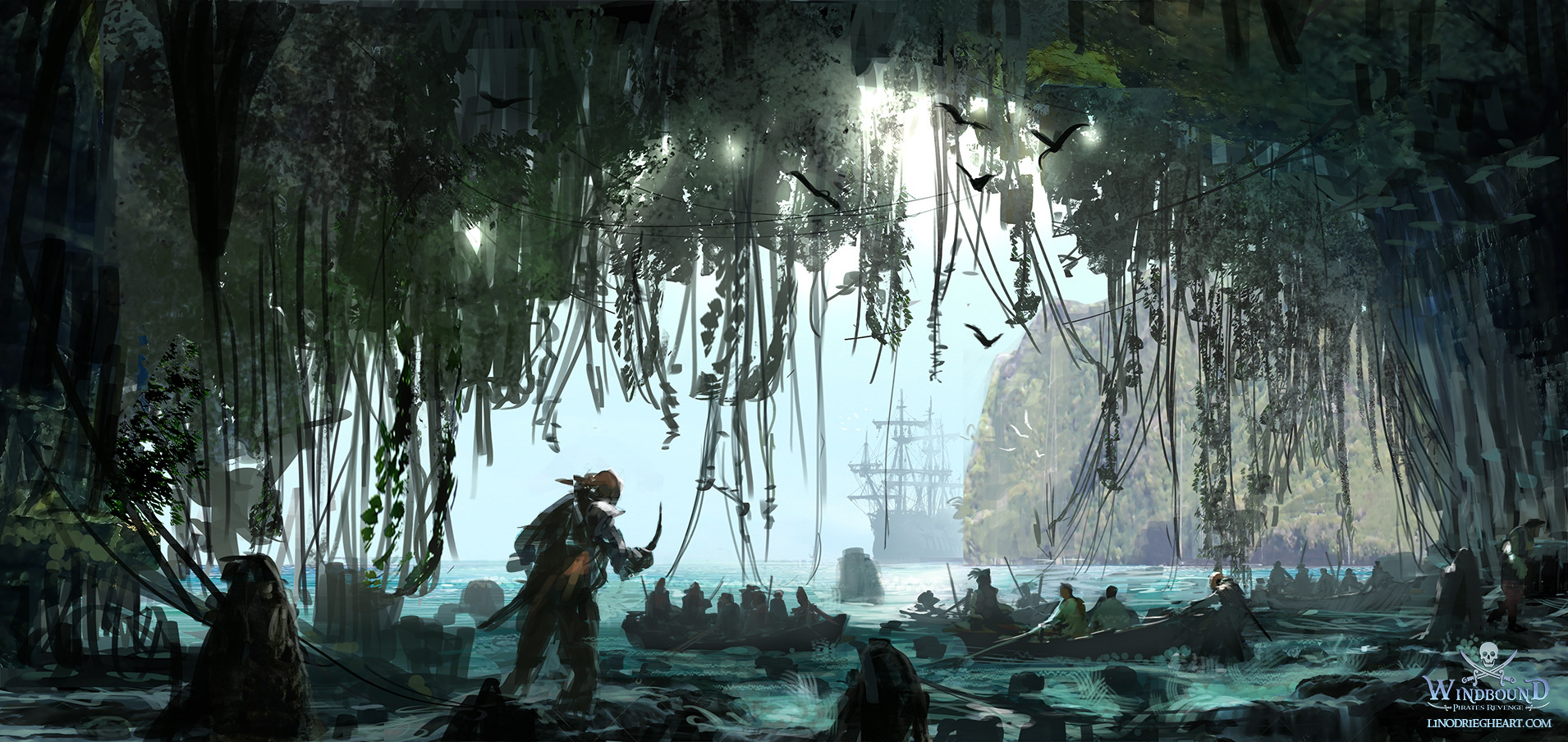Depth is another major rule in creating successful compositions and can be added next to Contrast and Leading Lines. By incorporating depth you create a bigger stage for your focus points to shine. Depth can be achieved by applying (atmospheric) perspective, overlap and repetition.
Perspective
By putting your elements in perspective you’ll automatically create the feeling of depth. The foreshortening of those elements and their textures allows the viewer to understand how the objects change over distance. They get smaller, therefore adding to the spacial feeling.
Take into account that with one point perspective, people tend to focus on that one vanishing point. For that reason you might want to put your focus point around that vanishing point.
Atmospheric perspective is another way of adding depth to your compositions. Values, saturation and details are altered the further the objects get compared to the spectator point. Often times, the objects receding in space will take on the color of the sky(dome), ie. blue, and will become colder in temperature.
Overlap
Create a fore-, mid- and back-ground to stage your focus points. We could say that the fore-ground is usually darker and is used to guide the viewer inside the work. The mid-ground is where the story takes place. We can leave the background less detailed to take the atmospheric perspective in account.
Avoid tangencies at all cost. Objects that have a strange point of contact are called tangents. The objects just touch without overlapping so it looks like the objects become one. Watch out for those tangents as it flattens out your work. The solution to this problem is actually quite straightforward. Use overlapping objects to give your compositions the illusion of space. Elements will look more three-dimensional and natural when being overlapped.
Repetition
Repetition can also add to the spacial feeling of your works as repeating elements create certain implied leading lines. Try to repeat elements at least three times to create this repetition.
Think of adding a certain shape hierarchy to your composition as well. The big, medium and small hierarchy is an important one here. It comes down to having a big object in de fore-ground that has detail. A medium sized object in the mid-ground to tell your story and a small object in the background to show the silhouette. To add more contrast and variety, we also variate the distance between those objects.
Please let me know if you use other ways or techniques to add more depth and space to your compositions!
